Enemies of the Cuirassiers
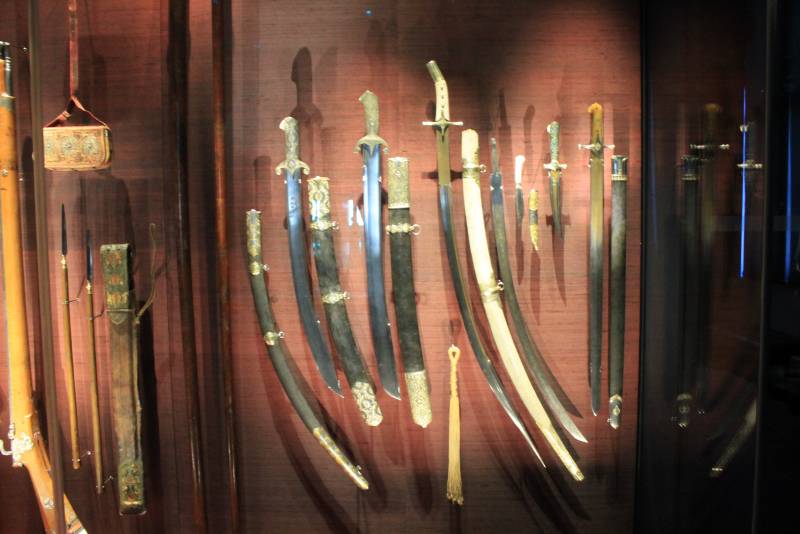
Weapon Turkish riders of the XVII century. To the left are two sabers of the gaddare (Pers.), Or fallen (tur.). They differed in a relatively short (65–75 cm), but wide (5–5,5 cm) blade, and had a thick (up to 1 cm) butt. Some blades (including those in the photo) had an elman, but its width was small. The handle with a crosshair had a characteristic shape. Crosses were small and bent forward. The scabbard was made of wood and covered with black leather. To the right is a Circassian saber with a point at the end of the blade to pierce chain mail and a straight broadsword (Dresden Armory)
Judith 16: 3
Skirmish over the hills;
Looks at their camp and ours;
On the hill before the Cossacks
Red delibash curls.
Pushkin A.S., 1829
Military affairs at the turn of the eras. Last time, we found out that the enemies of the plate cavalry of cuirassiers and reitars at the turn of the Middle Ages and the New Age, in addition to infantry with pikes and muskets, were numerous light cavalry units, including the national one. Of course, she was more numerous, although not so well armed. In the previous article, we talked about Hungarian hussars, Venetian stradiot, ramparts and dragoons. Today we continue the story of the enemies of the cuirassiers. And we will start it with the Turkish heavily armed horsemen of the Sipah cavalry, closest in type to the European horsemen-lancers in full knightly equipment or in dart armor in three quarters.
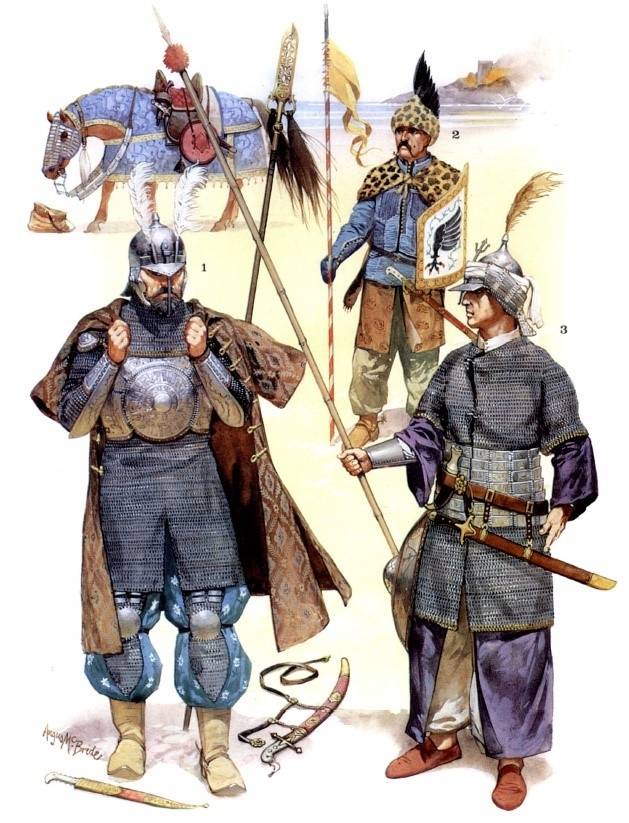
Turkish equestrian warriors 1600. 1 - rider of the Sipah cavalry, 2 - rider of Delhi, 3 - rider-mercenary of the Arab auxiliary cavalry. Fig. Angus McBride
At first, the sipahs were ordinary heavily armed riders, mounted on horses, dressed in shell armor and armed with spears and maces. It is clear that the armament of the sepoy warrior, as in the case of the European knight, directly depended on his wealth and the size of his land ownership - Timar. By the way, Timariots were often called these warriors by it. That is, it was an analogue of our "landowners." Since the sipahs fired from the bows from the horse, the protective weapons that they used had to provide high mobility of the shoulder girdle. Hence the prevalence of ring-plate armor among them. Turban helmets with chain hooks and a bow plate were popular. Other types of helmets were shashak and misyurka, from the Arabic word Misr - Egypt. Since the XNUMXth century, karacen armor has spread. Hands above the wrist were protected by tubular bracers. Kalkan shields were relatively small in size, but they were made of metal - iron or copper.
When warriors were called on a campaign, one in ten of the sepoys by lot remained at home to maintain order in the empire. Well, those who were in the army were distributed among the Alai regiments, commanded by the Cheribashi commanders, Subashi and Alaybey officers.
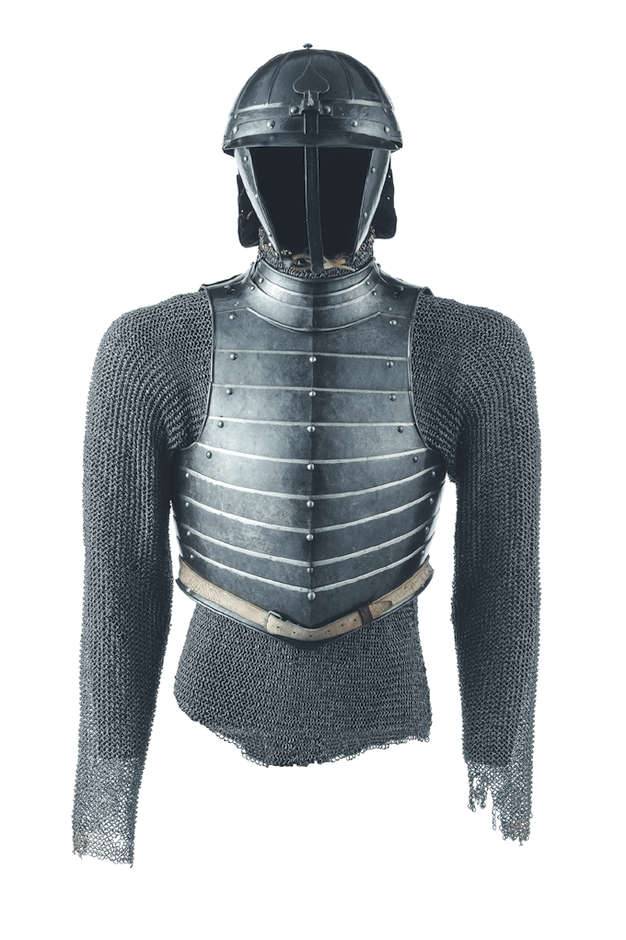
Armor of the Hungarian hussars - opponents of the Sipahs and Delhi. (Arsenal of Graz, Austria)
It can well be said about the sepoys that they were a kind of nobility of the Ottoman Empire and an analogue of the Russian local cavalry. A plot of land with peasants, shopping malls, mills - all this could be declared a timar (the word spakhilyk was also used sometimes), and transferred to use sipahu, which at the expense of funds had to arm itself and bring a small detachment of soldiers with it. Timars of the heyday of the Ottoman Empire were not a hereditary holding, but only temporarily were in use of the holder (timarl or timariot) only while he was in service. It is clear that under such a system, the sipahs over their peasants did not have complete power. Moreover, while in service, the siphas did not receive money allowances from the treasury, but had the right to military booty.
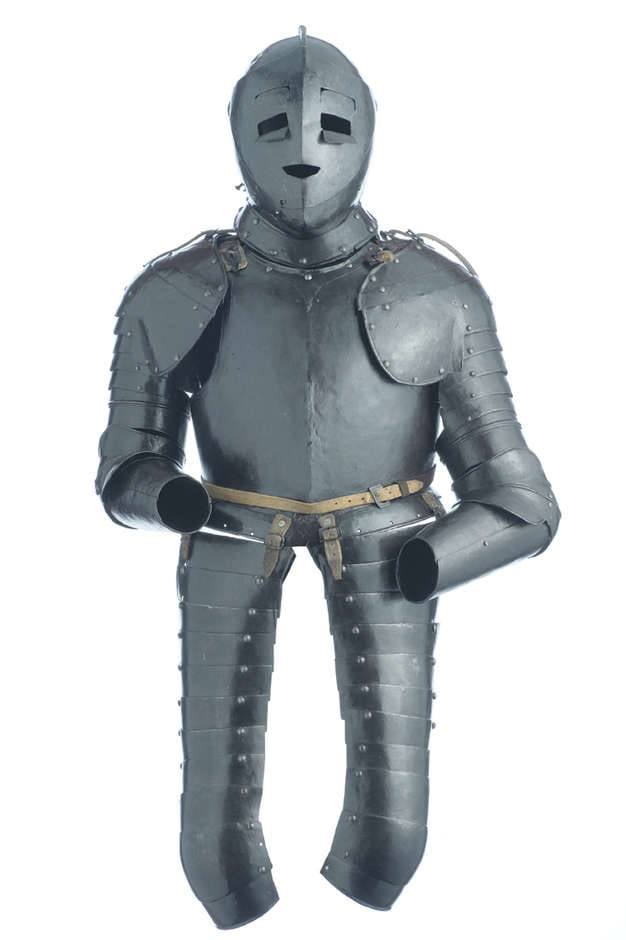
Three-Quarter Cuirassier Armor. (Arsenal of Graz, Austria)
If Sipah evaded his duties, his lucrative property could be taken from him and returned to the treasury. After the death of Sipahi, his retention for his family continued, but only if he had a son or some other close relative who could replace him in the service.
Since 1533, the Port government along the border with Hungary established a new system of timars. Now, instead of living in their local estates, the sepoys were required to serve constantly and to be in border cities along with the soldiers of the garrisons located in them.
The cessation of an active policy of conquest and the spread of corruption became the reasons for the mass evasion of the Siphs from service. Moreover, by hook or by crook, they began to try to transfer the timars into their private or religious property with payment of the corresponding contractual rent.
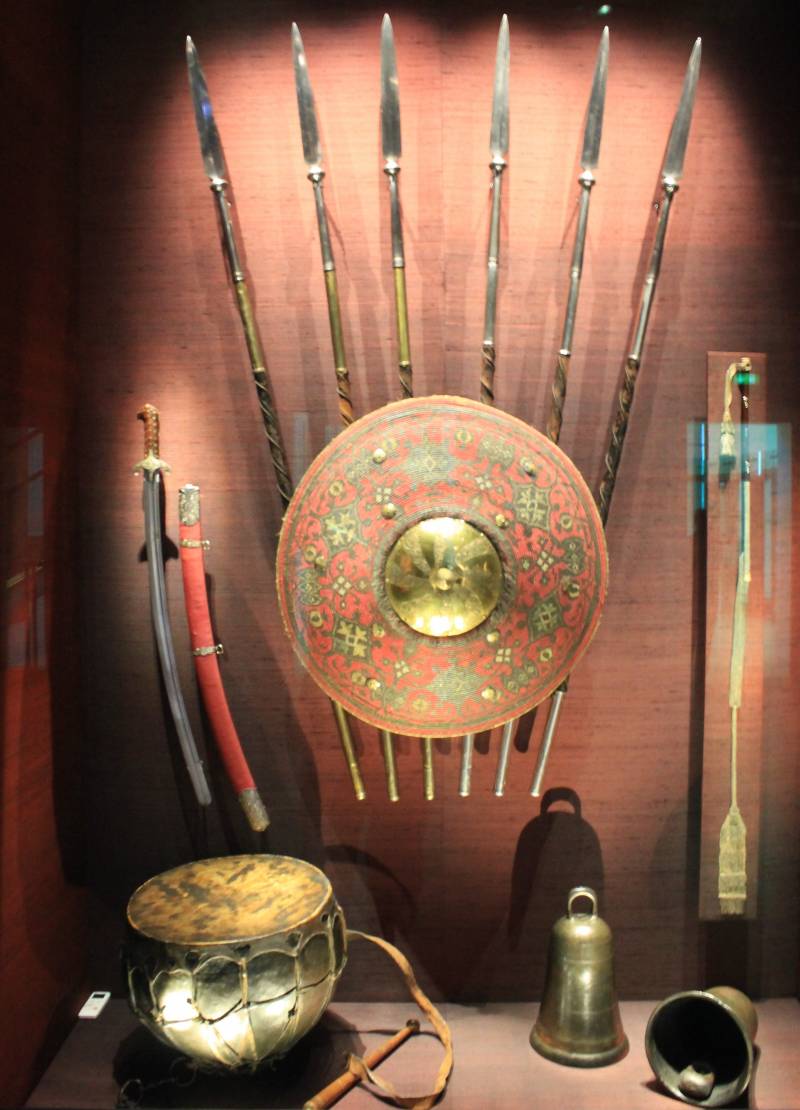
Kalkan shield (braided from rods) and other weapons and equipment of Turkish riders. (Dresden Armory)
In the XV-XVI centuries, the cavalry of the Sipahs was very numerous: about 40 horsemen, more than half of which came from the provinces of the empire located in Europe, in particular in Rumelia. But then, from the end of the 000th century until the end of the 100th century, over 10 years their numbers decreased by more than 1787 times. So in XNUMX, when Turkey was once again going to fight with Russia, Porta with considerable difficulty gathered only two thousand horsemen.
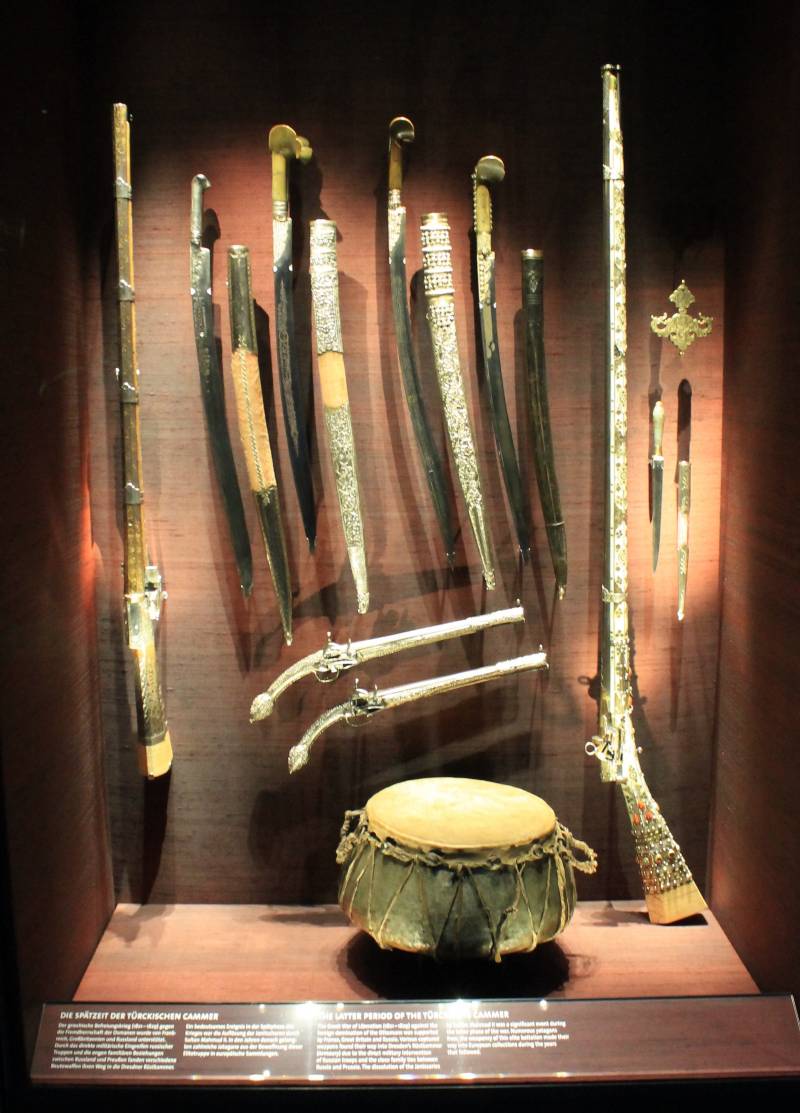
Cold steel and firearms: in the center of the window are yatagans and cavalry pistols, on the left and right are muskets encrusted with ivory and coral (right) (Dresden Armory)
Well, then Sultan Mahmud II in 1834 completely abolished the sepoys, after which they were included in the new regular cavalry. At the same time, in 1831-1839 the feudal system of the Timars was also liquidated. The lands of the former landowners were transferred to the state, which now paid them salaries directly from the budget. However, the memory of the brave horsemen of the sipahi did not die. From this name another thing happened - Spahi (spagi). Only now were the so-called units of light cavalry in the French and Italian armies, where the natives were recruited, but the commanders were from the French, as well as Sepoy (sepoys) - the well-known British colonial troops from Indians in India, arranged in a similar way.
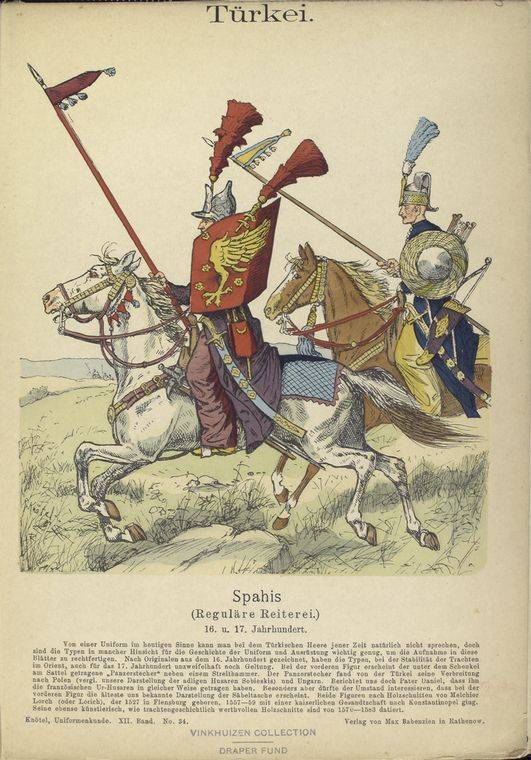
Drawing from Richard Knotel's book stories uniforms depicting sipah riders. Berlin, 1890 (Berlin State Library)
The main problem of the Sipahs, as, by the way, is the problem of the Russian local cavalry, was that both of them were incapable of change. At a certain stage, their role was positive, but times changed, and the sipahs did not want to change with time. In particular, this was expressed in a dismissive attitude towards firearms, and where, in Turkey, where the gunpowder was of excellent quality, and excellent muskets and pistols were produced. But ... the infantry was armed with all this. Mostly Janissaries, who armed themselves at public expense. But the Sipahs didn’t want to buy firearms at their own expense, and if they did, then ... they didn’t want to change their tactics of battle, they say, grandfathers fought and won so, and we will!
Naturally, lightly armed horsemen had to support the heavily armed siphach cavalry. And they were in the Turkish army. First of all, it is akyndzhi (derived from the Turkish word akın - “raid”, “attack” ”). These were irregular formations, but they played a very important role in the military system of the Ports. The organization of the akindzhi's cavalry was called akindzhlik, and it was created as border troops to protect the beyliks - the border regions. The Ottomans called such areas UJ. Ujj controlled the bay, whose title was hereditary. Such bays were called akindzhi bey or udzh-bey.
In the empire of the Seljuk Turks, Uj-Bey was a very significant person. He only once paid a tax to the Sultan once a year, and so was completely independent of him. He could fight with neighbors, rob them - the Sultan did not care. In the state of the Ottomans, the Akıncı freedom was reduced and they had to act on behalf of the Sultan. In fact, UJ-BAY received money from these lands, and called cavalry detachments on them. The state did not pay them any maintenance, did not give out weapons and equipment, akindzhi also bought horses themselves. But on the other hand, they did not pay the extraction tax either, and everything that fell into their hands remained with them!
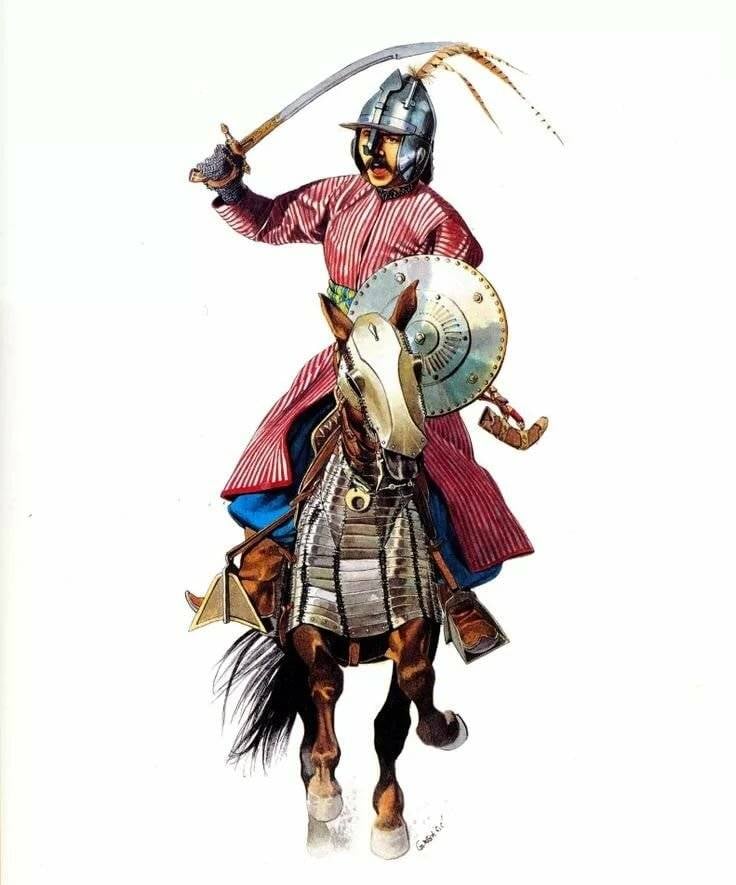
Sipah Horseman. On his head is a helmet-shishak, a shield - a kalkan, a saber kalich. The mass of such a saber reached one and a half kilograms. Stirrups are noteworthy. The Turks did not use spurs, but spurred horses on the inner edges of their massive box-shaped stirrups. (Illustration from the book "Cavalry. The history of fighting elite 650BC - AD1914" by Vuksic, V., Grbasic, Z.)
In fact, these were civilian units where anyone could sign up, but it was necessary to submit recommendations from the imam, village headman of the village, or any person known to Uj-Bey. The names of the applicants, as well as the name of the father and place of residence, were recorded and stored in Istanbul. Akıncı Bey (commander) was appointed by the Sultan or his viceroy Sardar.
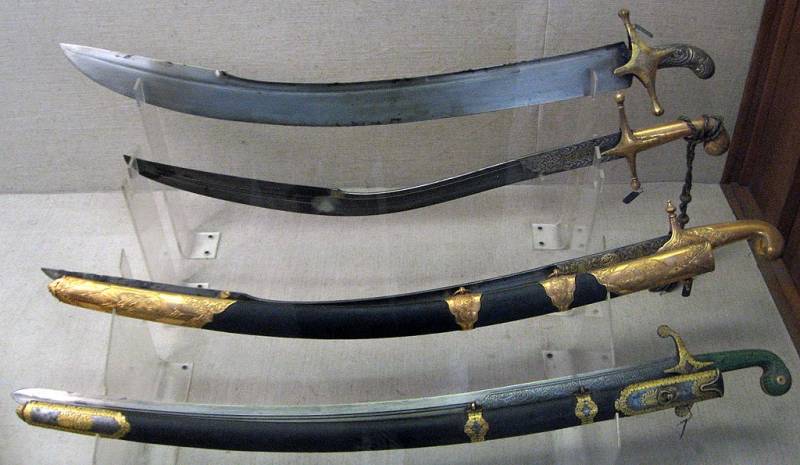
Turkish sabers: the upper saber is a gaddare, but with a strange handle. Below is a spring tree with developed elman. (Topkapi Arsenal, Istanbul)
A dozen horsemen commanded onbashi (corporal), a hundred - subashi, a thousand - bigbashi (major). Already during the battle on the Kosovo field, the number of akindzhi reached 20, and under Suleiman I more than 000 people. But then their number began to fall again and in 50 there were only two thousand of them. It is interesting that in peacetime they could live anywhere, but it was required that they constantly train and be ready to go camping on demand. The Akıncı armor was practically not worn, but had shields - either kalkans or Bosnian scutums. The weapons used were mostly cold: sabers, bows, lassos. Typically, these horsemen on campaigns were either at the forefront of the army, or in the rearguard. They had spare horses with them so that there was something to take out the prey on. Most often the Akıncı fought in Europe, but such sultans as Mehmed II, Bayazid II and Selim I used them in Anatolia.
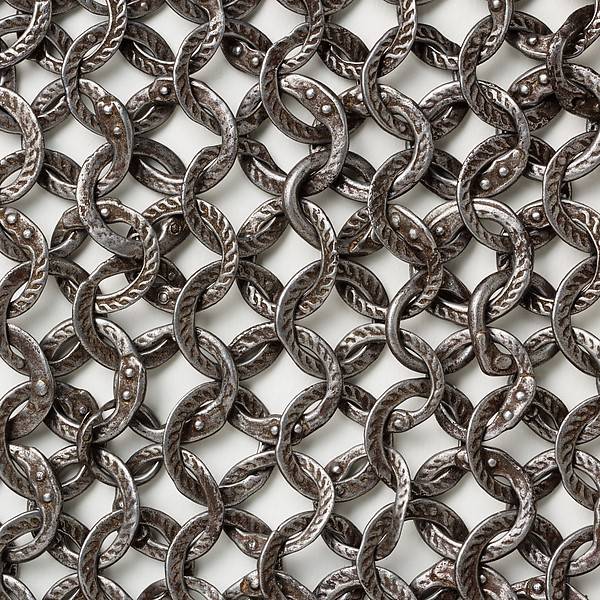
10,52th century Turkish chain mail, weight XNUMX kg. (Metropolitan Museum of Art, New York)
At the beginning of the XVII century, these riders began to suffer heavy losses in battles with the imperial cavalry. Already in 1630, akindzhi turned either into ordinary soldiers, or agreed to serve only for money. Instead, the Turks had to use the hired Tatar cavalry of the Crimean khans. He finally disappeared in 1826.
Another unit of the Turkish light cavalry was Delhi riders, which can be translated as “rip off the head” and “desperate brave man”. They appeared at the end of the XV — beginning of the XVI century and became famous for their desperate courage, as well as their unusual clothes. However, very often it happened that military clothing was just designed to scare enemy soldiers. A contemporary described their outfit, emphasizing that many of them were covered with tiger skins, making them something like a caftan. Of the means of protection, they had convex shields, and their weapons were spears and maces attached to their saddles. Delhi hats were also made from the skins of wild animals and decorated with eagle feathers. They also decorated feathers of the Boisnian scutum type with feathers and not only that: behind them, too, were feather wings. So it is believed that the Polish plate hussars just from them, from Delhi, borrowed the idea of wearing wings with feathers behind their backs. The weapons they used were a spear, a saber, a bow and arrows. Delhi riders' horses were distinguished by their strength, agility and endurance.
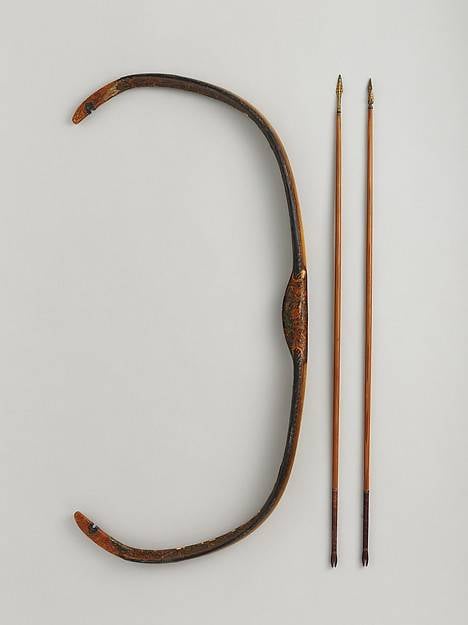
Turkish Onion 1719-1720; Length 67,9 cm (Metropolitan Museum of Art, New York)
In the 26th century, for some reason, Delhi began to wear hats that looked like cylinders XNUMX inches high, made of black lamb leather (!) And wrapped in turban on top!
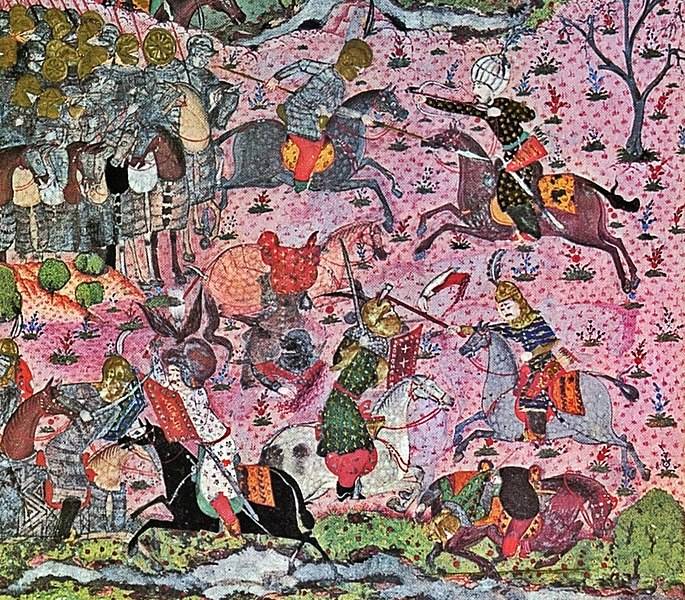
The riders of Delhi (left) battle with the Hungarian riders (right), 1526. Miniature from the manuscript “Sumeimanname” (Topkapi Museum, Istanbul)
The organization of Delhi was as follows: fifty to sixty horsemen made up a bayrak (flag, standard). Delibashi commanded several bayraks. The recruit took the oath, received the title of aga-jiraghi ("disciple of aga") and this very famous hat. If Delhi violated the oath or escaped from the battlefield, he was expelled, and his hat was taken away!
References
1. Nicolle, D. Armies of the Ottoman Turks 1300-1774. L .: Osprey Pub. (MAA 140), 1983.
2. Vuksic, V., Grbasic, Z. Cavalry. The history of fighting elite 650BC - AD1914. L .: A Cassel Book, 1993, 1994.
To be continued ...
- Vyacheslav Shpakovsky
- With whom the latniks of the emperor Maximilian fought?
“A small discovery in the butt of an arquebus ...”
Horsemen of the Eighty Years War
Horses and saddles of the XVI-XVII centuries
“By people and by horses, not by aer”
Ordonance companies
“It's a miracle if someone is killed with a spear”
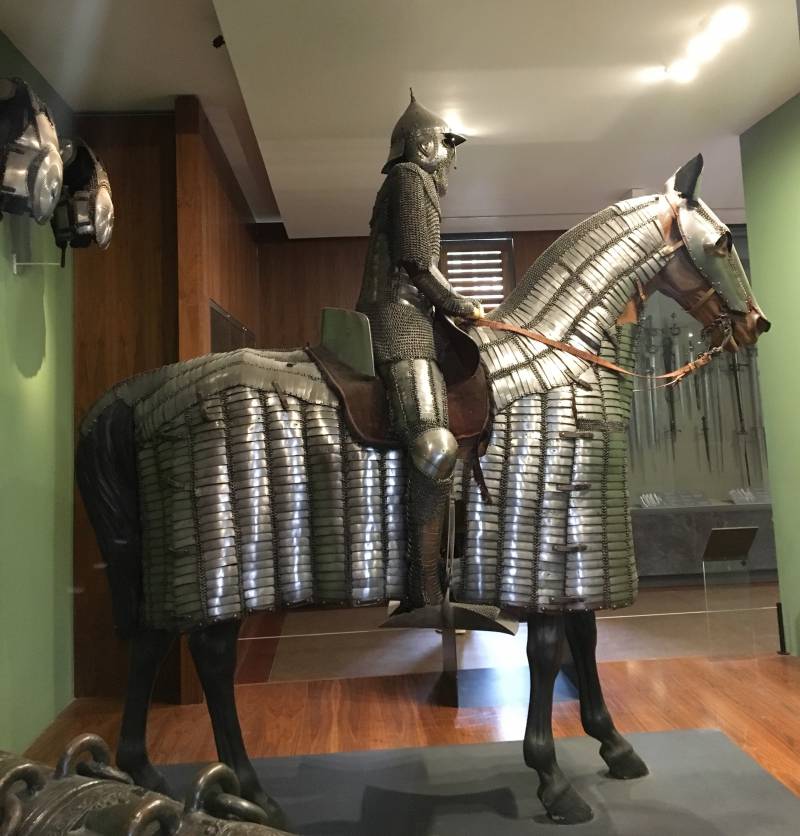
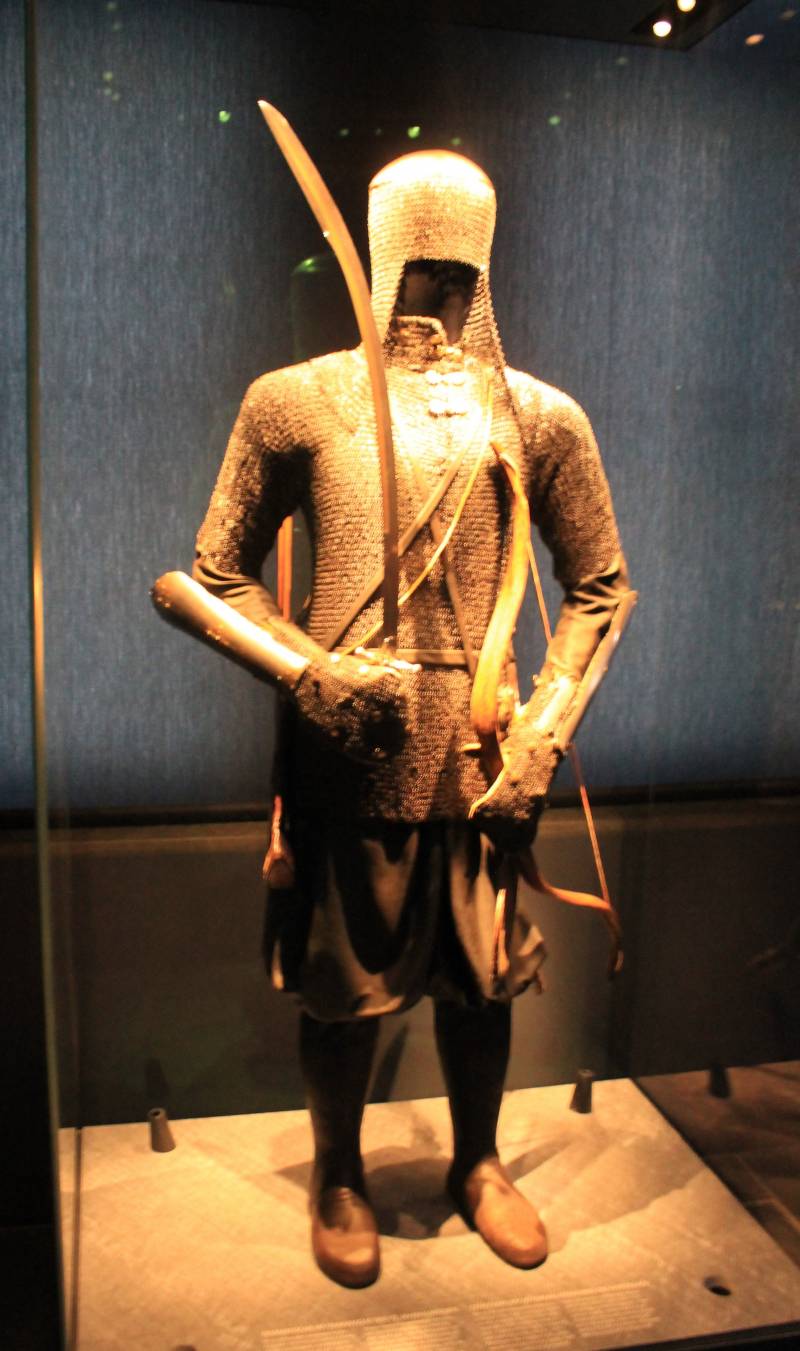
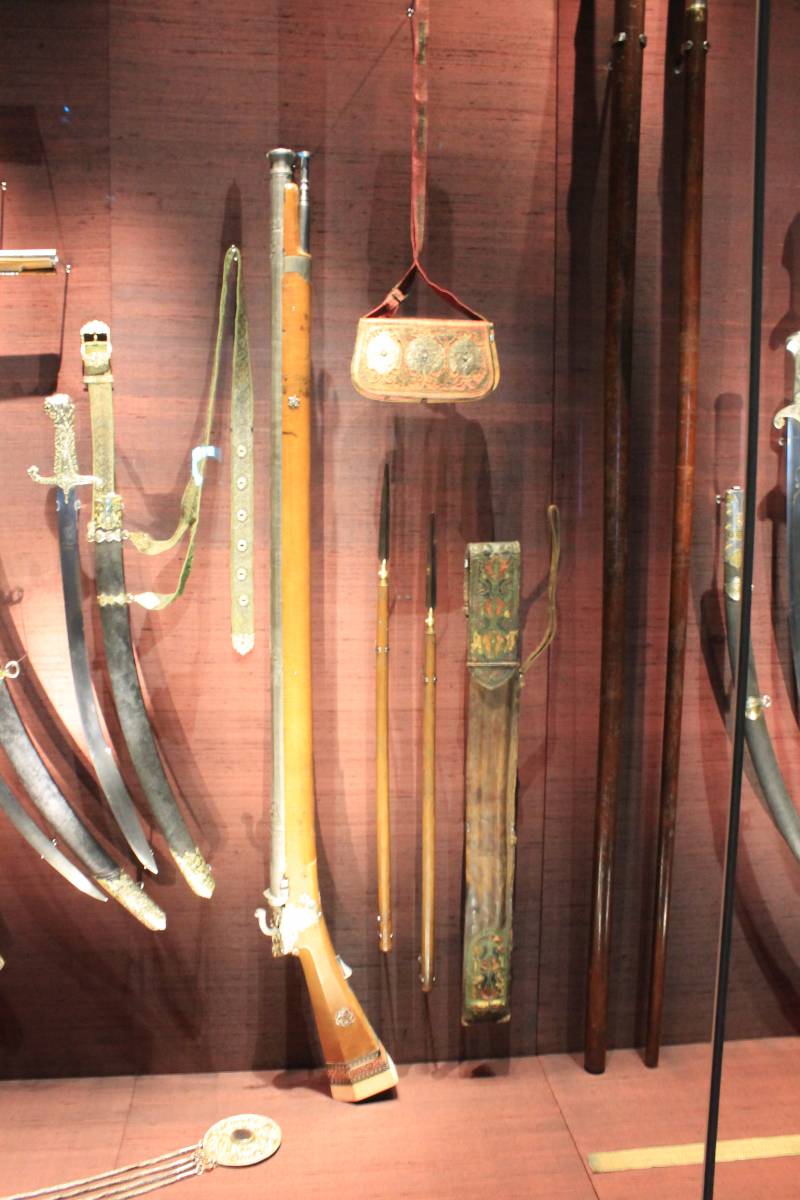
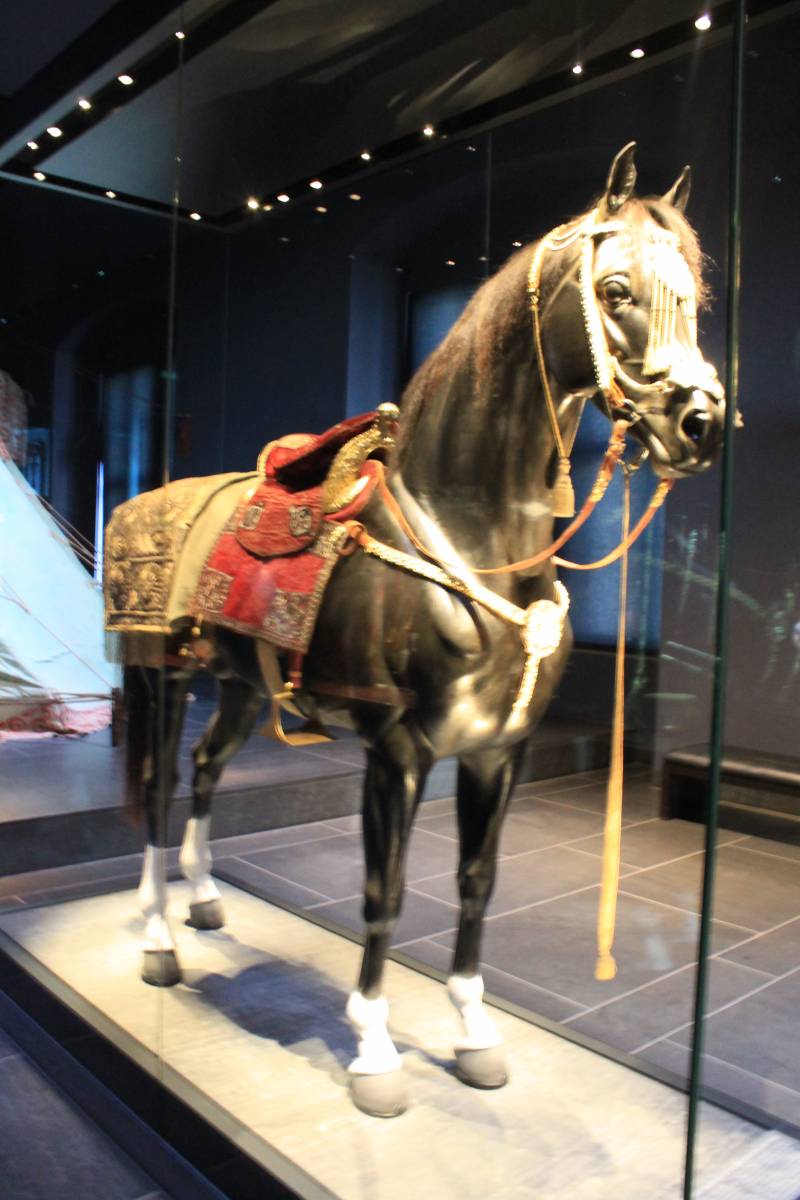
Information